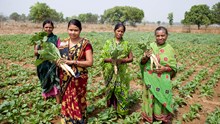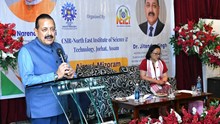
Irrigation is the backbone of agriculture in India, particularly since a majority of the agricultural land depends on it for crop production. The country faces several challenges related to water usage, including water scarcity, inefficiencies in irrigation methods, and fluctuating rainfall patterns.
In a country where resources are becoming increasingly scarce, it’s essential to adopt data-driven solutions to enhance irrigation efficiency. Similarly, online gambling platforms are leveraging technology and data analytics to optimise user engagement and ensure a more efficient and personalised experience. If you want to learn more on the topic of online casinos and gambling, you can read more about an engaging game that gives you a chance to earn some pocket money.
Importance of Irrigation Efficiency
The term refers to how well resources are used to support crops without wastage. In India, where agriculture accounts for around 70% of water usage, improving irrigation methods can lead to better crop yields, reduced water consumption, and lower costs for farmers. Given that the agricultural sector faces pressure due to unpredictable rainfall and deteriorating groundwater levels, efficient practices are essential for meeting the country's food demands.
Modern Irrigation Techniques
Drip Irrigation
A drip system delivers moisture directly to the plant roots through a network of tubes and pipes. This significantly reduces water loss. It is particularly useful in water-scarce regions, where it helps conserve resources by applying it in precise amounts. This technique is highly effective for crops like vegetables, fruits, and horticultural plants because it ensures that the right amount of moisture is delivered where it is needed the most.
Sprinkler Irrigation
Sprinklers mimic natural rainfall, which makes them an ideal solution for crops in regions that don’t have sufficient natural water resources. Sprinklers are highly beneficial for larger fields and can cover a wide area. Although it is not as efficient as a drip system, it still significantly improves irrigation efficiency compared to traditional approaches.
Rainwater Harvesting
Capturing rainwater during the monsoon season helps farmers to store it for use during dry periods. This method reduces the dependence on groundwater and surface sources. Rainwater harvesting systems can also lead to better management of resources, particularly for small and medium-sized farms in areas that face water scarcity.
Technologies to Monitor and Optimize Irrigation
Soil Moisture Sensors
These can help farmers determine the exact amount of water their crops need. The sensors measure the moisture level in the soil and send real-time data to the farmer. Integrating this technology is a good way for farmers to avoid over- or under-watering their crops, which can lead to more efficient resource usage. This approach saves water and helps reduce energy consumption and operational costs.
Weather Forecasting Tools
Real-time weather data helps farmers adjust their irrigation practices based on upcoming weather conditions, such as expected rainfall or high temperatures. This knowledge can reduce the need for water on rainy days and help conserve resources.
Government Support and Initiatives
The Indian government has introduced several initiatives to promote efficient systems. The Pradhan Mantri Krishi Sinchayee Yojana (PMKSY) is one such programme designed to improve irrigation infrastructure in the country. It aims to increase the coverage of irrigation and improve the efficiency of water usage. Through these government initiatives, farmers are encouraged to adopt modern technologies and ensure better resource management.
Role of Education and Training for Farmers
For any new technology to be successful, farmers need to understand how to operate and maintain it effectively. Education and training on modern irrigation methods are crucial to improve efficiency across India’s agricultural sector. Farmers need to be educated about the benefits of adopting technologies like drip systems, soil moisture sensors, and weather forecasting tools. This can help them make informed decisions about sustainable practices that will enhance productivity and save water.
Challenges in the Adoption of Efficient Irrigation
The high initial cost of installation, lack of awareness, and insufficient support for maintenance are some of the most common challenges in the field. Small-scale farmers, who make up a large proportion of India’s farming community, often struggle with them. Moreover, in some regions, traditional irrigation methods are deeply rooted, and changing these practices requires overcoming resistance from local communities.
















